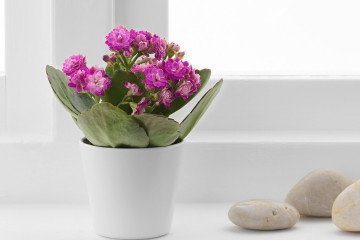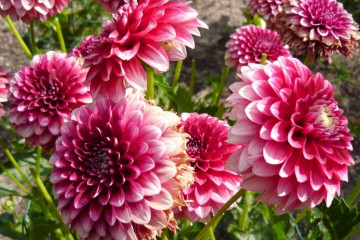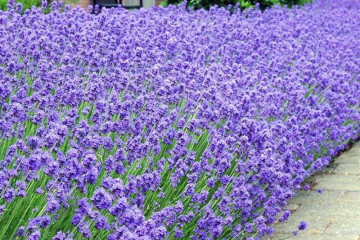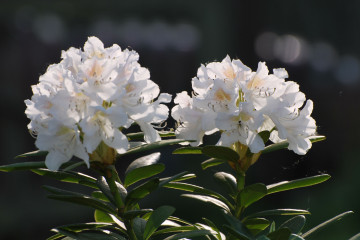Primrose when it blooms: ripening period and changes in flower care
Content:
Primula is one of the spring plants that bloom almost the very first and delight everyone with their beautiful appearance for a long time. Some species can produce flower buds several times a season. Therefore, novice florists often have a question about primrose - when does it bloom?
Dormant period of the plant
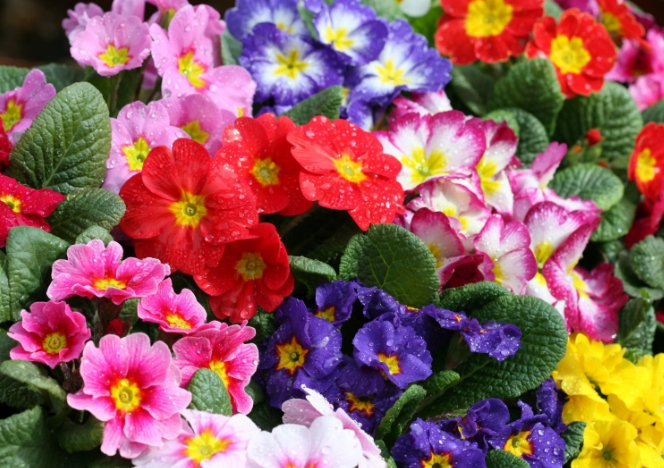
There are many types of primroses
After a vigorous flowering, primrose begins a dormant period. At this time, the pedicels and lower leaves begin to fade. However, the green socket remains in a normal state, continues to grow. During the dormant period, it is necessary to provide suitable conditions for a young culture:
- It is recommended to create partial shade for the bush. Indoor culture is placed on the northern windowsill, and a simple shelter is made for the garden plant.
- It is best to lower the ambient temperature during dormancy. For a home primrose, it is quite possible to do this, and the flowers in the plots remain to grow at the same temperature.
- At this time, you should not water the flower too much, minimal irrigation is enough. The street plant is in most cases adapted to local conditions, so it continues to grow normally after flowering.
When and how it blooms
Many are interested in how many primrose blooms in time? The flowering of a culture can begin at different times. Some varieties throw out their buds already in March-April, others begin to bloom in early summer - it all depends on the variety. The flower itself is rather small in size, however, there are usually a lot of inflorescences on it. In some varieties, they can grow in the form of an umbrella on a stem in the amount of 25-50 pieces, while it can have either one flower or several at once.
The shades of the petals can be different, ranging from yellow to dark purple. Moreover, they are monochromatic or include several colors at once. Primrose lovers are very popular with varieties that are perennials and bloom all year round.
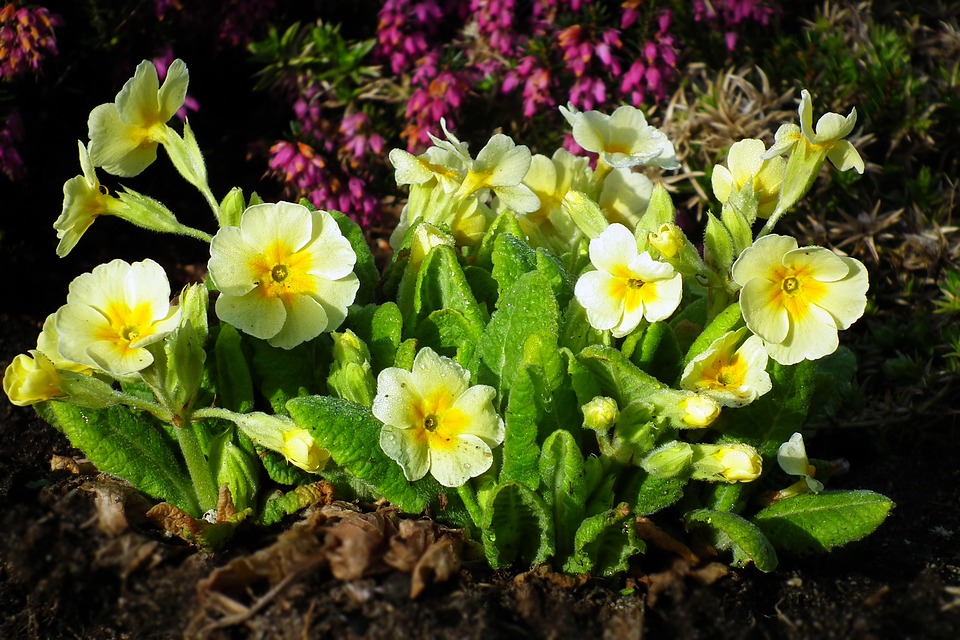
Primrose is a primrose, in the spring it is one of the first to please with beautiful flowers
Views
There are about 400 varieties of primrose, they are divided into separate sections in accordance with their characteristics. In addition, they differ from each other in appearance or in the duration of their life.
The most popular varieties for home breeding are:
- Obkonika. It is a perennial plant that is small in size. With proper care, it can delight with flowering throughout the year.
- Stemless primrose. The flower is also small, gives buds from April to July, then the dormant period begins.
- Soft. The plant pleases with a flowering view from early spring to early summer.
It is important for gardeners to select varieties so that they can perfectly tolerate outdoor weather conditions. Of these, the following are distinguished:
- Japanese. The plant can reach a height of almost 50 cm, the flowering period is in June.
- Orchid. The second name of the culture is Viale primrose. It has an original appearance, many small bells are formed on the inflorescences.
- High.This primrose can also grow up to half a meter in height. The flowers are quite large, they can reach about 2 cm in diameter. The flowering period is from April to the end of May.
- Cushion-shaped. Differs in single flowers, not collected in inflorescences. It also blooms from early April to late May.
The timing of flowering primrose depends not only on the variety, but also on the surrounding conditions.
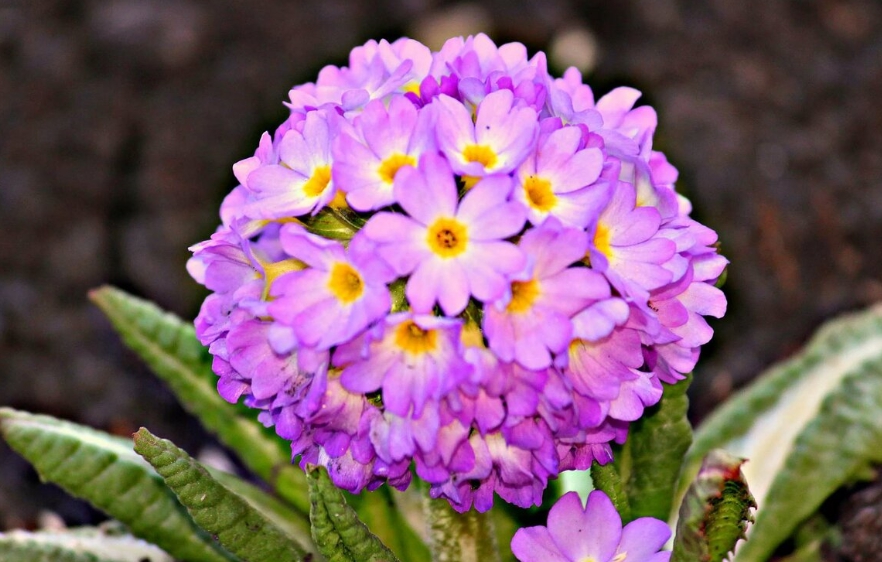
Primroses bloom differently
Flowering period
Primrose is one of the cultures that take root and multiply very quickly. Therefore, it is a pleasure to grow it at home. How long does primrose bloom? This period lasts on average from 1 to 3 months, depending on the variety.
Do you need to prune your primrose after flowering? It is recommended to cut off all dry leaves and inflorescences, reduce the amount of watering and move the pot to a cooler place - then the primrose will begin a dormant period.
Why does not it bloom
The lack of flowers on primrose is frustrating for any grower. There are several possible reasons that can provoke this problem:
- High room temperature. Such plants do not really like it when the air heats up over 20 degrees. They grow well, but do not bud.
- Low humidity and direct sunlight also adversely affect such a flower.
- Indoor crops do not like drafts, so it is recommended to carefully monitor this condition.
- Lack of sunshine also negatively affects primroses.
- You should not place the pot on the windowsill, under which the heating battery is installed.
- A small container can also be the reason that the primrose does not bloom. It is worth transplanting a plant on time.
- Lack of fertilizer leads to the fact that the flower simply does not have enough nutrition to produce buds.
- Use for watering from the tap. This is unacceptable because it is too tough for plants.
- The lack of a drainage layer, abundant watering, poor-quality soil - these problems also affect the state of the culture.
- The presence of diseases and pests not only prevents blooming, but can also cause the death of the entire bush.
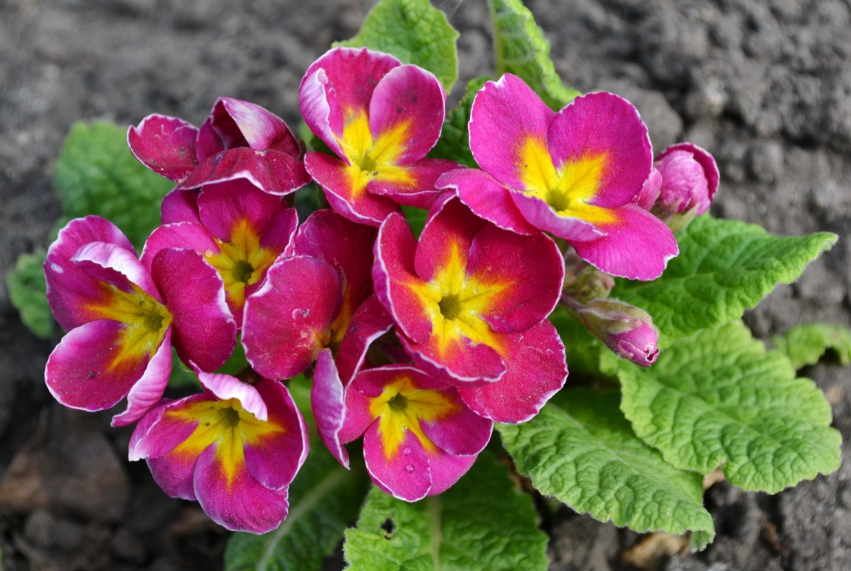
Garden primroses begin to bloom from April and delight with beauty until the beginning of summer
Regardless of how much a perennial primrose blooms, it is important to follow all the rules of care.
Home care
If street primroses eventually get used to the weather conditions and tolerate them quite well, then home specimens require regular and high-quality care. Otherwise, they will not only not bloom, but may also die. There are fairly simple rules for caring for a primrose.
Humidity
Primrose in natural conditions germinates one of the first, therefore, it is quite calm about humidity, it begins to bloom during a thaw. But hot and dry air can provoke drying of foliage.
At home, it is recommended to maintain the indicator at the level of 60-70%, then the flower will grow and develop well, as well as give buds in certain seasons.
If the air is too dry, then the primrose begins to wither, the leaves dry. Such conditions often provoke the development of diseases and the appearance of various pests.
In summer, a small container of water can be placed next to the crop pot. The liquid will gradually evaporate, keeping the humidity at the required level.
If desired, you can use the second option - pebbles or expanded clay are poured into the pallet, thoroughly moistened, and a pot is placed on top. You can even place the container on a damp cloth, the main thing is that the flower is comfortable and the surrounding conditions are suitable for it.
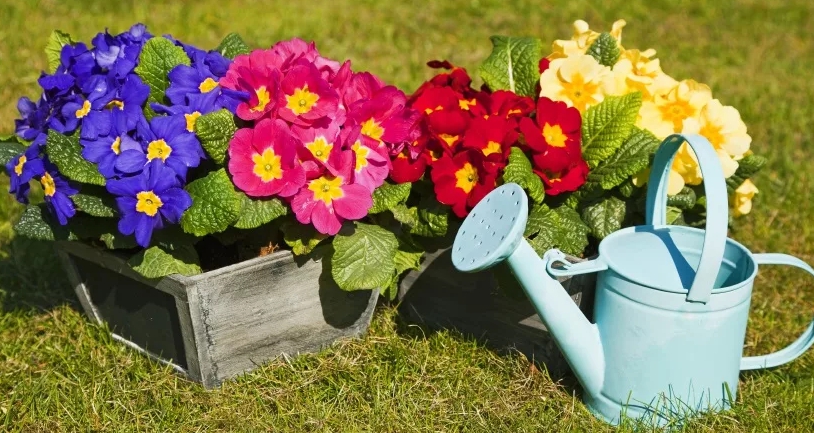
The flowering of a crop under good conditions can last a very long time.
Watering
Garden primroses are watered as needed, often enough natural rainfall. At home, it is important to ensure that the plant has enough moisture, but do not overflow it.
The soil should always be slightly moist, but it is worth remembering that frequent overflows can cause rotting of the root system. The water must settle, the liquid cannot be used immediately from the tap - it is too hard.
Irrigation for primrose differs slightly depending on the season:
- In the spring, it is recommended to water the crop as needed, as soon as the topsoil dries up. But it is important to ensure that the container does not turn into a swamp.
- In summer, the weather is dry, so it is necessary to ensure that the ground does not dry out. The amount of irrigation during this period is slightly increased. A light shower is allowed once a month.
- In autumn and winter, irrigation is carried out a couple of times a week, because the plant begins a dormant period. It is best not to disturb the flower much.
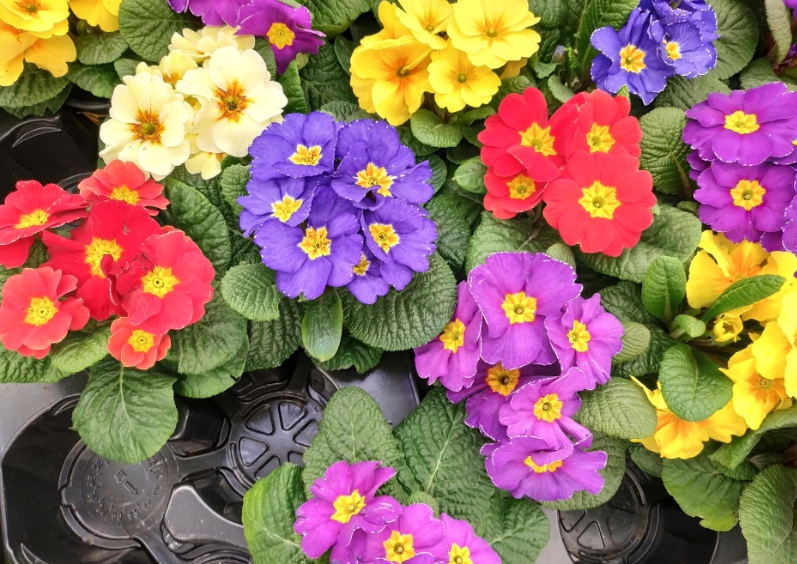
It is important for home plants to provide the necessary conditions
Fertilizers
Garden flowers are fertilized several times per season. Pets also need small feeding, which must be done correctly.
How to feed primrose in spring for lush bloom? For feeding, it is best to choose complex fertilizers that are suitable for flowering plants. They must contain phosphorus, zinc and potassium.
To apply top dressing, the portion indicated on the package must be halved so as not to overfeed the culture. During the flowering of primrose, it is recommended to apply fertilizer once every two weeks.
Temperature
Low temperatures are not terrible for primroses, especially for garden plants. Domestic flowers also like coolness more, they start to hurt in the heat. The best temperature is considered to be up to + 18 ... + 20 degrees. At high rates, it is recommended to moisturize the flower on time. During the dormant period, it is better to move the pot to a cool room, otherwise the primrose will simply not bud.
Reproduction methods
Primrose is a great plant that can be propagated in several ways. All of them are quite simple, but it is still important to comply with all the necessary conditions and rules while doing this.
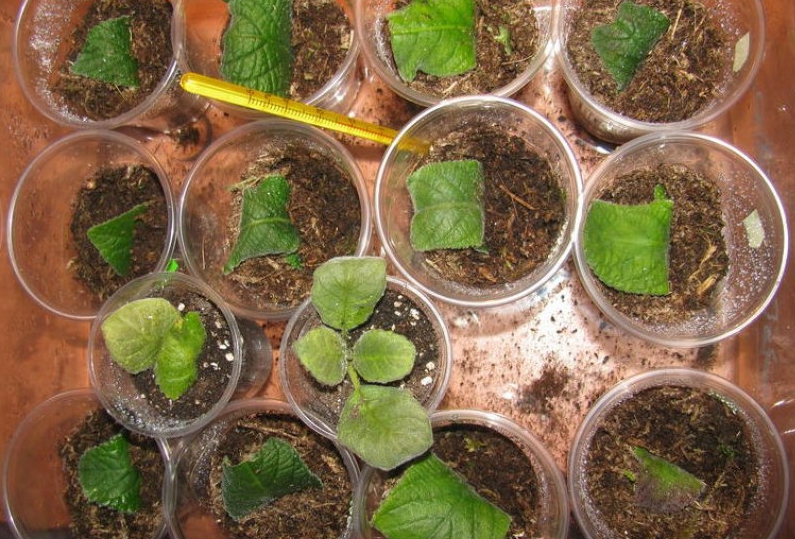
Leaf propagation is used for small plants.
Seeds
Seed propagation of primrose does not require any special skill. You can collect planting material from your own plants or purchase it in specialized stores. It is worth remembering that the seeds very quickly lose their germination, become bad, so it is better not to leave them for a long time.
It is best to plant seeds in the winter. The process is carried out as follows:
- It is required to prepare a suitable soil. You can buy it in the store or make it yourself from sand, peat and leafy soil (equally in total).
- Pour earth into the container.
- The seeds will need to be carefully scattered over the container and sprinkled with earth a little. It is not worth planting them deeply so that they quickly ascend.
- From above, the container is covered with film or glass to create greenhouse conditions, and removed to a cool room.
- The shelter is removed when the first shoots appear. It is important to keep track of small sprouts and maintain the necessary conditions.
After several leaves appear, you can transplant the shoots into separate containers.
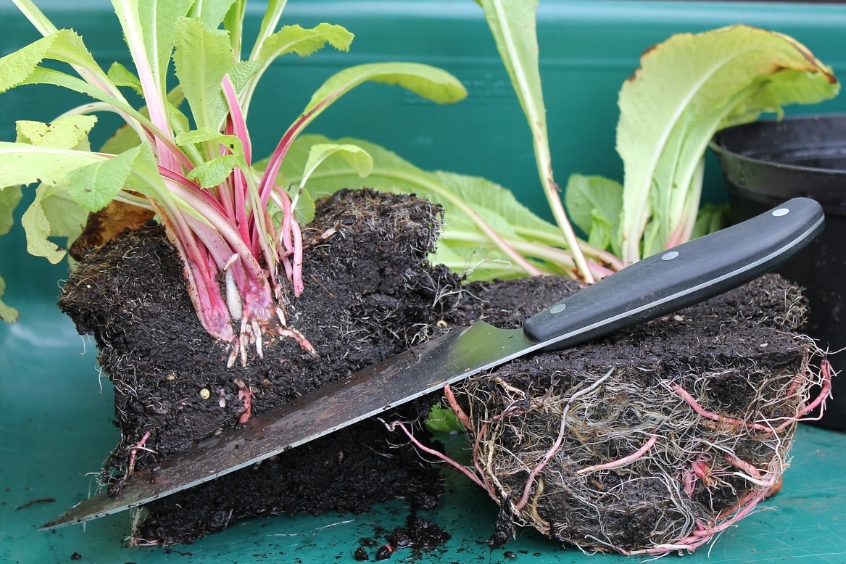
The division of bushes is suitable for flowers over three years old
Cuttings
Propagating primrose by cuttings is also quite simple. The method is used when the plant is small or weak, so it cannot be divided into several parts.
Landing is carried out as follows:
- Cut off a leaf near the base of the bush.
- Prepared soil is poured into the container.
- The leaf is placed in the pot so that it is at a slight angle, deepening it a couple of centimeters.
- It is important to spill the earth well, then cover the container with foil or glass. The pot is removed to a cool place.
It is necessary to air the flower daily. The roots will appear after a couple of months, then new leaves will begin to grow. After that, the primrose can be transplanted into a suitable container.
By dividing the bush
Very large and strong bushes are propagated by division. This is the easiest way, it is carried out at least a couple of weeks after the end of flowering. Flowers from the age of 3 years are suitable for dividing.
The procedure is carried out as follows:
- At home, the flower is taken out of the container, the root system is cleaned of soil residues.
- The roots are washed with cool water.
- With a knife, they divide the flower into several parts, while leaving a little main shoot on them.
- Sections are treated with activated carbon or ash.
- All bushes must be immediately planted in prepared containers so that they do not dry out and die.
- The ground is watered, young plants are covered with a film and left in a warm room.
Rooting will take place after about three weeks, after which the bushes can be transplanted into separate suitable pots.
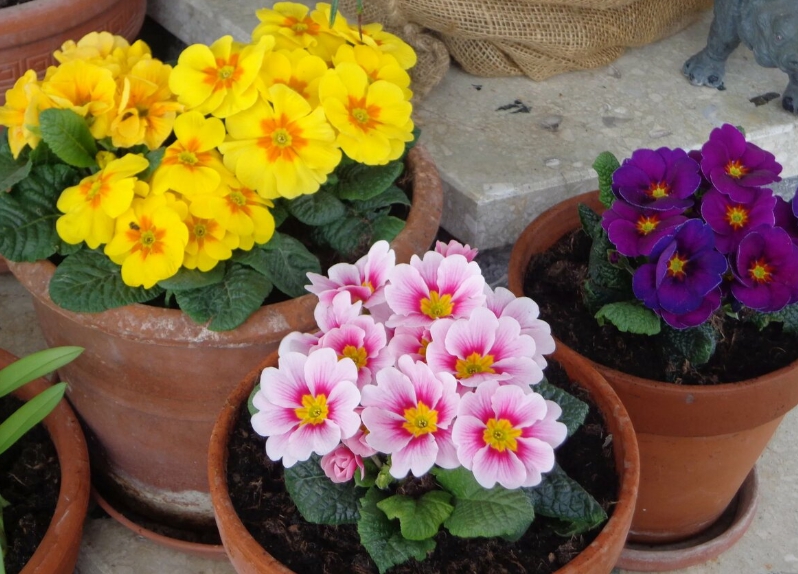
Primroses are diverse, but each species requires different conditions, so you should pay attention to these flowers.
Flower pruning
"When the primrose faded, what to do next?" - many newbies are interested. Primrose maintenance also includes regular pruning. It is necessary to remove dried and yellowed leaves from the plant. After flowering, peduncles and wilted buds should be cut off so that the forces of the plant are not directed at them, but further development.
In garden primrose, you need to cut the leaves only in the summer, in the autumn they do not do this, since they serve to protect the culture from winter frosts.
Primrose is a wonderful plant that, with proper care, will delight you with a beautiful view and long flowering. It is not difficult to take care of her, it is important to follow a number of fairly simple rules and monitor the conditions of detention. There are several ways to propagate a flower, so it is very easy to choose the most suitable and convenient one.
